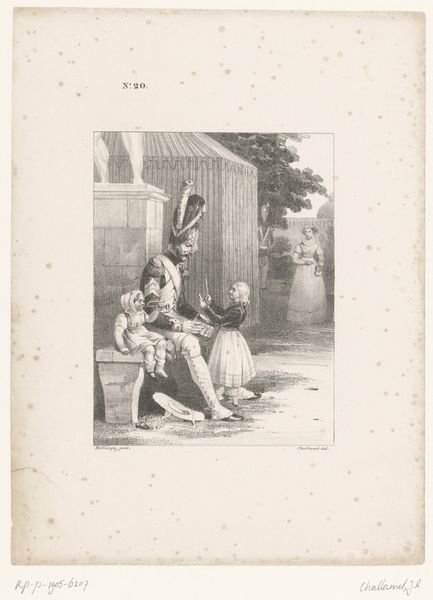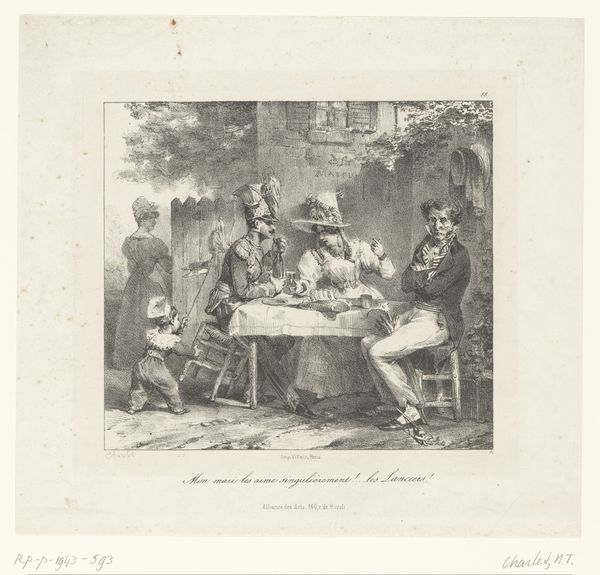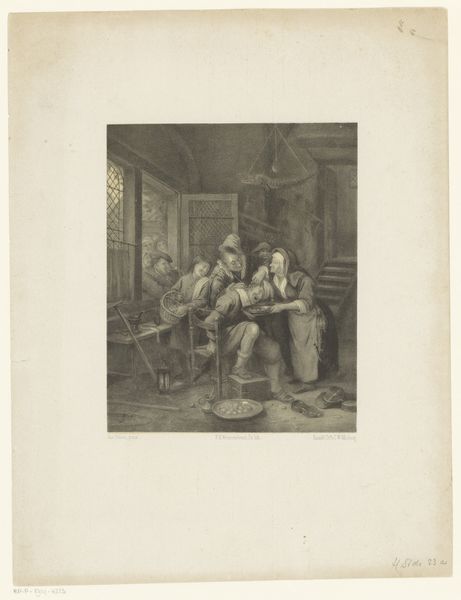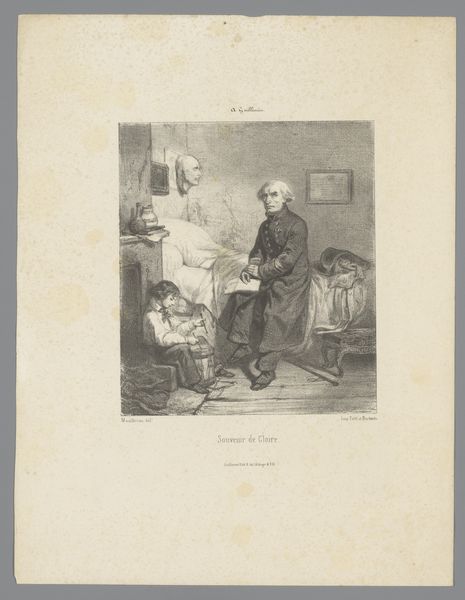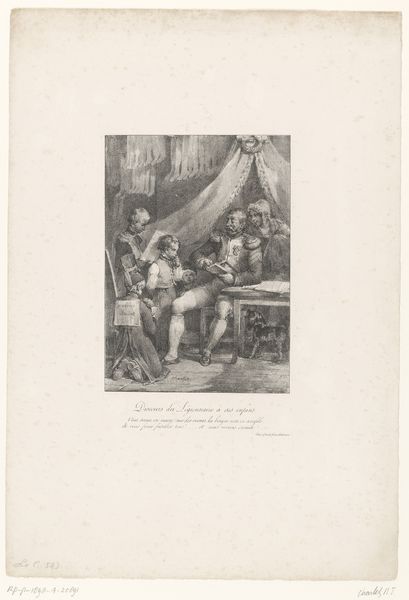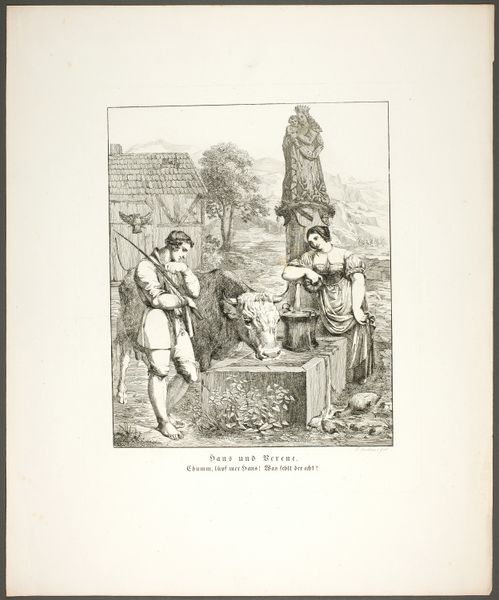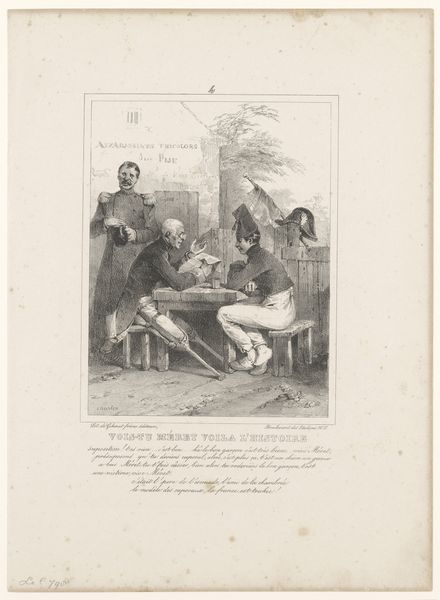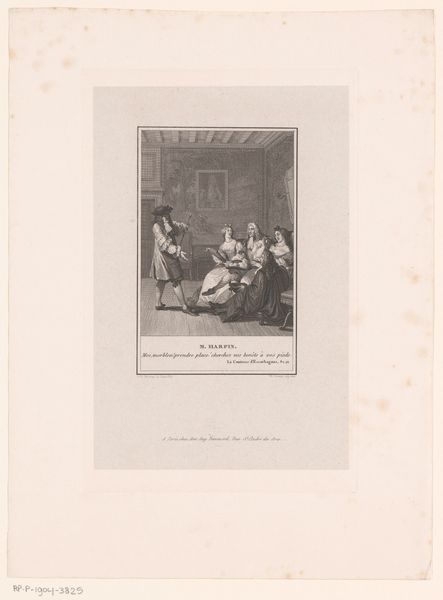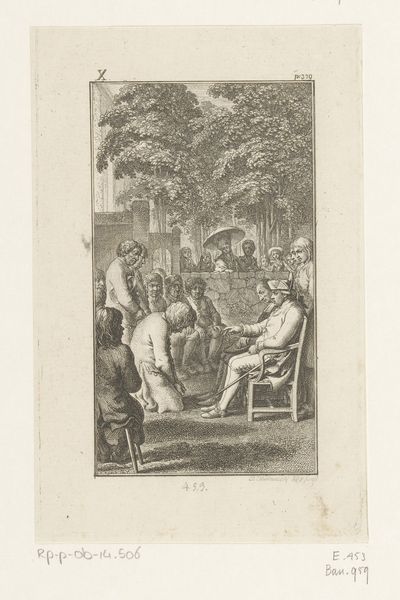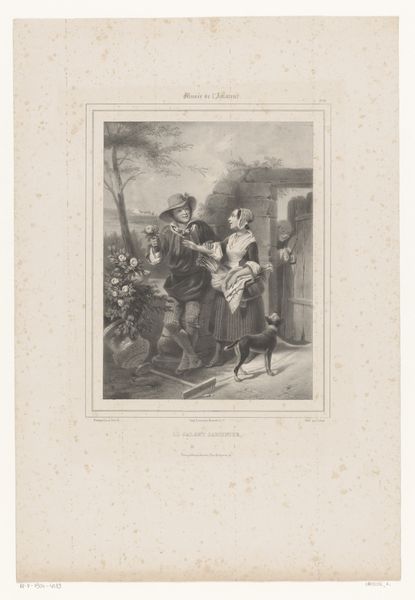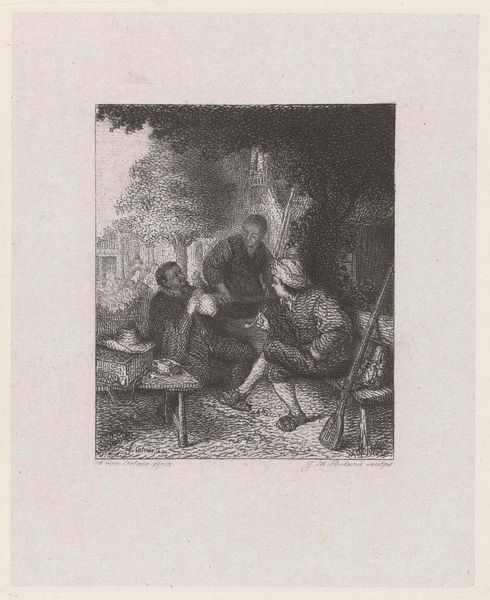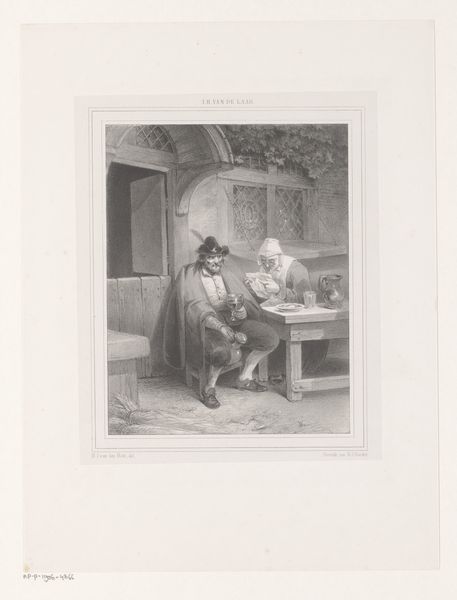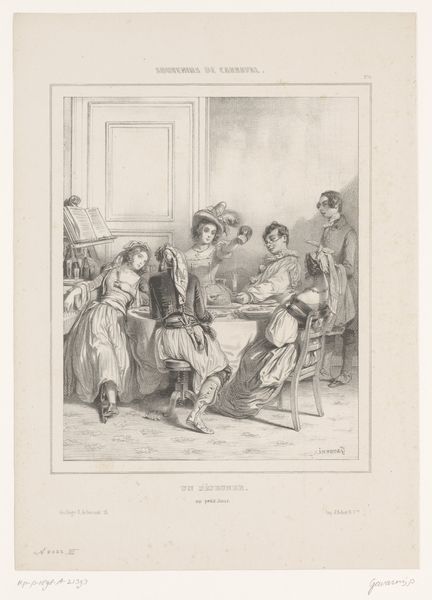
Dimensions: height 345 mm, width 252 mm
Copyright: Rijks Museum: Open Domain
This is a print, "Resting Travellers," made in the 19th century by Jan Wendel Gerstenhauer Zimmerman. It’s made by the intaglio process of etching, which involves drawing into a prepared ground on a metal plate with a sharp needle, and then bathing the plate in acid. The acid bites away the exposed lines, leaving an image that can be inked and printed. The effect here is wonderfully detailed, capturing the weary postures and ruddy faces of the men. Notice the contrast between the crisp lines of the figures and the softer, more atmospheric rendering of the background foliage. This contrast is achieved by varying the density and depth of the etched lines, a laborious and painstaking process requiring a high degree of skill. Consider the social context here. The print was made at a time when the Industrial Revolution was transforming European society, and rural life was increasingly romanticized. By focusing on the everyday lives of working people, Zimmerman offers us a glimpse into a world that was rapidly disappearing. This print reminds us of the value of craft, labor, and tradition in a changing world.
Comments
No comments
Be the first to comment and join the conversation on the ultimate creative platform.
